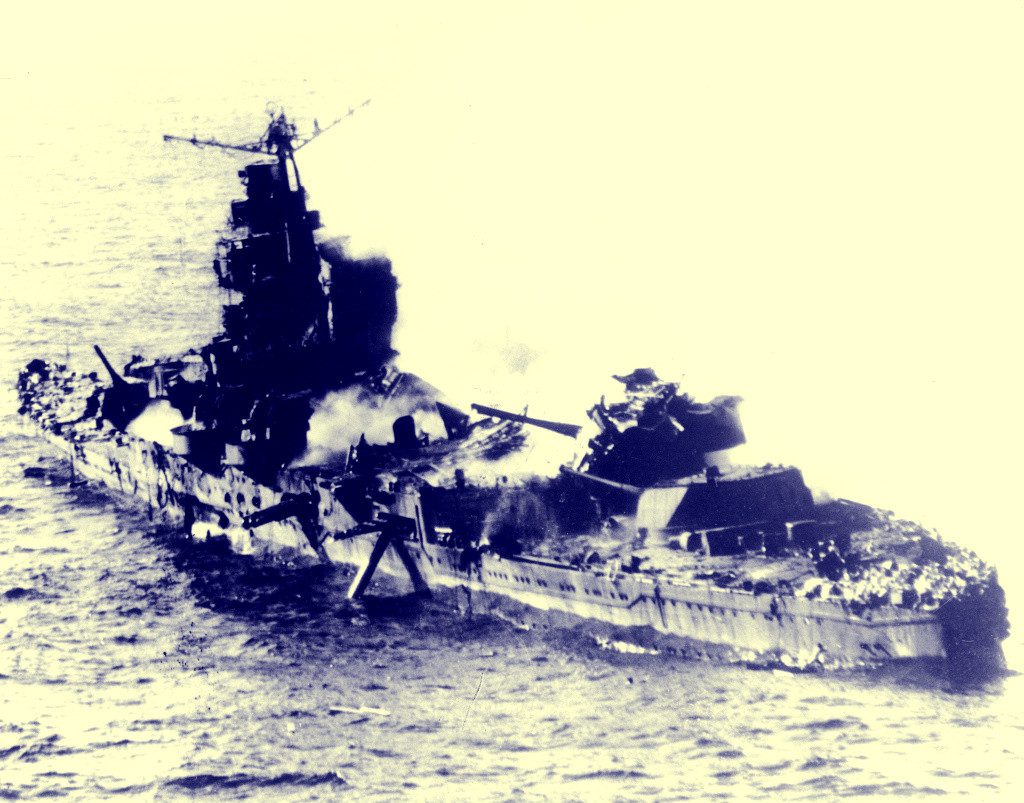The Battle of Midway, fought in June 1942, was a critical turning point in World War II. It marked a shift in power in the Pacific and exposed flaws in Japanese naval strategy. The Midway Atoll played a vital role for both the United States and Japan, as controlling it would provide a strategic advantage. The Japanese had previously demonstrated their naval superiority, relying on surprise attacks to cripple their enemies. However, American codebreakers were able to decipher Japanese messages, giving the US crucial information about the enemy’s plans. This intelligence allowed the US to ambush the Japanese fleet and inflict heavy damage, ultimately leading to a major blow to Japanese naval power. The Battle of Midway not only halted Japanese expansion, but it also boosted American morale and set the stage for subsequent Allied victories in the Pacific.
The Battle of Midway: Turning Point in the Pacific and Japanese Naval Strategy
Introduction
The Battle of Midway, fought between June 4 and 7, 1942, marked a critical turning point in World War II. This decisive battle between the United States and the Imperial Japanese Navy occurred six months after the attack on Pearl Harbor and changed the course of the war in the Pacific. The victory at Midway not only halted Japanese expansion in the Pacific but also revealed significant flaws in their naval strategy.
The Importance of Midway
The Midway Atoll, a small and strategically positioned island in the Pacific Ocean, was of vital importance for both the United States and Japan. Controlling Midway would enable the Japanese to divert attention from its conquests in Southeast Asia and secure a forward base to attack Hawaii. For the United States, losing Midway threatened the defense of Hawaii and the West Coast. Recognizing its significance, the U.S. devised a plan to ambush the Japanese fleet and turn the tide of the war.
Japanese Naval Strategy
The Japanese had demonstrated their naval superiority in previous battles, including the attacks on Pearl Harbor and Singapore. Their strategy relied on swift, surprise attacks to cripple their enemies before they could mount a counteroffensive. This approach had worked effectively until the Battle of Midway.
The Importance of Carrier Operations
The backbone of Japanese naval power was their aircraft carriers, which provided the ability to strike distant targets. Prior to Midway, the Japanese enjoyed numerical superiority in carrier forces, with four large carriers compared to the United States’ three. Their strategy was to lure the U.S. fleet into a decisive battle near Midway, where they expected to overwhelm and destroy the remaining American carriers.
Deciphering the Japanese Code
The turning point in the Battle of Midway came from American intelligence efforts, particularly the successful decryption of Japanese naval codes. Codebreakers, led by cryptanalyst Joseph Rochefort, were able to intercept and decipher Japanese messages, providing crucial information about the enemy’s intentions and battle plans. This intelligence allowed the U.S. to anticipate the Japanese attack and prepare a defense.
Turning the Tide
The U.S. strategy, known as Operation Midway, involved luring the Japanese fleet towards the island and launching a surprise aerial assault. On June 4, American carrier-based aircraft attacked the Japanese carriers, causing heavy damage to all four ships. In response, the Imperial Japanese Navy engaged in a series of poor tactical decisions, including failed counter-attacks, which led to the loss of three of their carriers in a single day.
Aftermath and Impact
The Battle of Midway dealt a major blow to Japanese naval power. The loss of four carriers, including skilled pilots and experienced crew members, severely crippled the Japanese fleet. Moreover, it shattered the myth of Japanese invincibility and marked a turning point in the Pacific theatre of war. From this point onwards, the initiative slowly shifted to the United States, and the Japanese were forced into a defensive posture.
Recognition of Midway’s Importance
The significance of the Battle of Midway was immediately recognized by military leaders and historians. Admiral Chester W. Nimitz, Commander in Chief of the U.S. Pacific Fleet, described the victory as “the most decisive naval battle in U.S. history.” Midway not only boosted American morale but also acted as a turning point by halting Japanese expansion and providing a stepping stone for future offensive operations.
Legacy and Lessons Learned
The Battle of Midway exposed the vulnerabilitie of relying solely on aircraft carriers for naval power projection. The Japanese failed to adequately protect their carriers and underestimated the strength of the U.S. forces. Additionally, this battle highlighted the importance of intelligence and codebreaking in modern warfare, leading to the development and advancement of cryptographic methods.
Conclusion
The Battle of Midway was a turning point in the Pacific and Japanese naval strategy. The American victory not only shifted the balance of power in the Pacific but also revealed the flaws in the Japanese approach. By halting further Japanese expansion, the battle set the stage for the United States to reclaim territory and ultimately led to the Allied victory in the Pacific theater.
